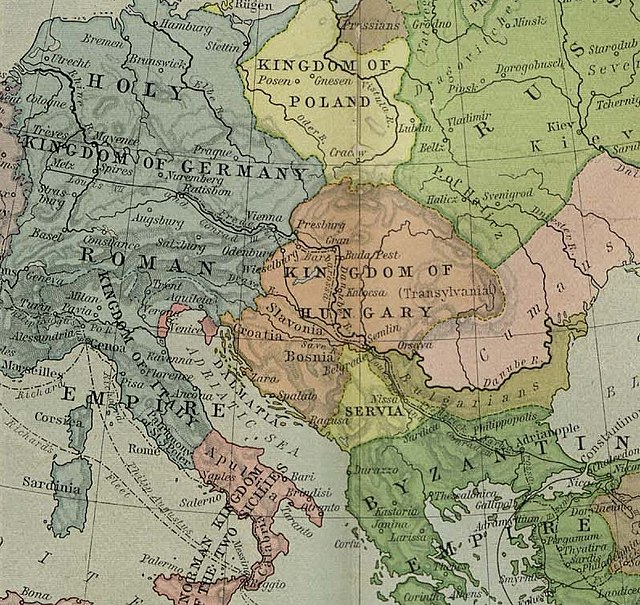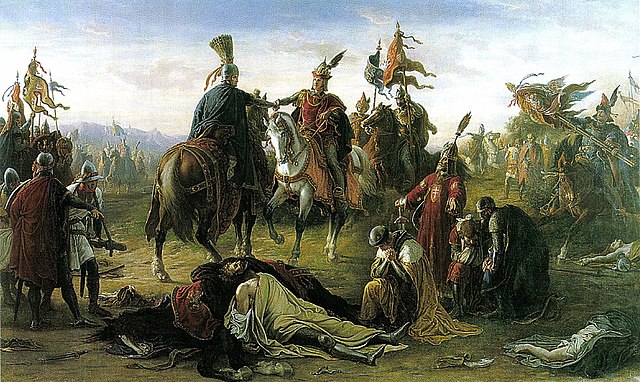The Kingdom of Hungary was a monarchy in Central Europe that existed for nearly a millennium, from the Middle Ages into the 20th century. The Principality of Hungary emerged as a Christian kingdom upon the coronation of the first king Stephen I at Esztergom around the year 1000; his family led the monarchy for 300 years. By the 12th century, the kingdom became a European power.
King Stephen I of Hungary
The Holy Crown of Hungary along with other regalia
Hungary (including Croatia) in 1190, during the rule of Béla III
The Meeting of Ladislaus IV and Rudolf I during the Battle on the Marchfeld, painting by Mór Than (1873)
Coronation of the Hungarian monarch
The coronation of the Hungarian monarch was a ceremony in which the king or queen of the Kingdom of Hungary was formally crowned and invested with regalia. It corresponded to the coronation ceremonies in other European monarchies. While in countries like France and England the king's reign began immediately upon the death of his predecessor, in Hungary the coronation was absolutely indispensable: if it were not properly executed, the Kingdom stayed "orphaned". All monarchs had to be crowned as King of Hungary in order to promulgate laws and exercise his royal prerogatives in the Kingdom of Hungary. Starting from the Golden Bull of 1222, all new Hungarian monarchs had to take a coronation oath, by which they had to agree to uphold the constitutional arrangements of the country, and to preserve the liberties of their subjects and the territorial integrity of the realm.
Holy Crown of Hungary (Saint Stephen's Crown), and other pieces of the Hungarian Regalia
King Saint Ladislaus I of Hungary being crowned by angels. Image from the Chronicon Pictum of the 14th century.
Coronation of King Stephen III in June 1162
Coronation of Matthias II in Pozsony in 1608





